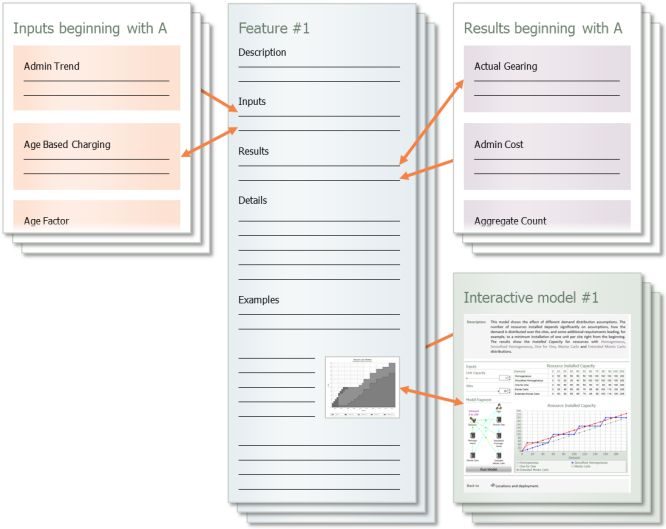1. Getting Started describes system requirements and the installation procedure, together with a quick introduction to using STEM, and some tips for how to get the most out of the STEM help system. It also contains documentation relating to the most recent STEM software release.
3. Basic concepts provides a detailed description of the STEM paradigm, together with a step-by-step guide to building a simple model.
4. Editor skills provides a complete description of everything you can do in the STEM Editor, written in terms of the procedures you can perform.
This section also contains Help on the inputs in the STEM editor 4.28 Data dialogs. This can be accessed by data dialog directly from the software (for example, pressing <F1> while in the Service Demand dialog will take you directly to the STEM help Service / Demand page of the online resource, as illustrated below).

Figure 1: Accessing help on the Service/Demand data dialog by pressing <F1> in the STEM Editor
The content for each input in the data dialogs is generated from the same content as in the alphabetical lists of 10.1 Inputs and 10.2 Results contained in 10. Calculation framework for maximum consistency.
5. Results program skills provides a complete description of everything you can do in the STEM Results program, written in terms of the procedures you can perform.
6. Exchanging data provides a common reference for all the techniques you can use to link STEM to other applications, such as word-processing and spreadsheet packages. There are procedures to help you retrieve input data from Microsoft Excel spreadsheets and databases, and export STEM results in a variety of formats for further processing; as well as a number of ways to export views, graphs and tables for inclusion in documents and reports.
7. Distributable STEM provides a detailed description of the facility for suitably licensed users to export and freely distribute run-time models.
8. Business models on the web explains the operation of an Enterprise STEM (eSTEM) application server which connects a user interface delivered and presented in a web page to an encapsulated set of related STEM calculations performed on a central server.
9. Model structure describes the techniques you can use when building the structure of a STEM model. This covers topics such as user data, grouping Elements using Collections, building scenarios, carrying out sensitivity tests, and managing complexity with template replication.
10. Calculation framework explains all the modelling features and elements of STEM, and is cross-referenced with
full, alphabetical lists of inputs and results, and illustrated with a library of interactive models.

Structure of the Calculation framework section
This structure is designed to make it easier to locate information relevant to a
particular input or result, while maintaining an adequate picture of the way these
inputs and results are related.
11.1 External Reference Labels for Excel and 11.2 External Reference Labels for databases provide comprehensive listings of all the labels, for every field in each type of element, required to provide default values for whole model elements in Excel files (see 6.3 Linking input data from Microsoft Excel spreadsheets) and databases (see 6.6 Linking input data via ODBC), respectively.
11.3 Files used by STEM describes the program and sample files supplied with STEM, as well as the purpose and format of all the files STEM uses to store model data, layout, results and configuration.
11.4 STEM.INI explains the role of the STEM.INI file, together with a description of the syntax and entries governing various user options.
11.5 Glossary provides a brief explanation of all the specialist telecoms and software terms used in STEM.